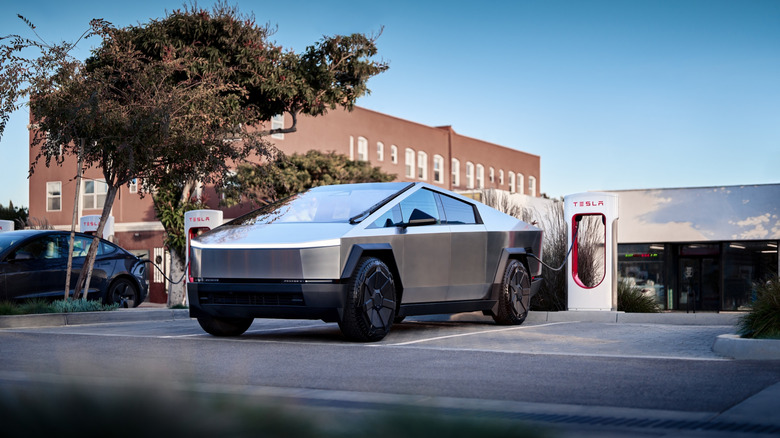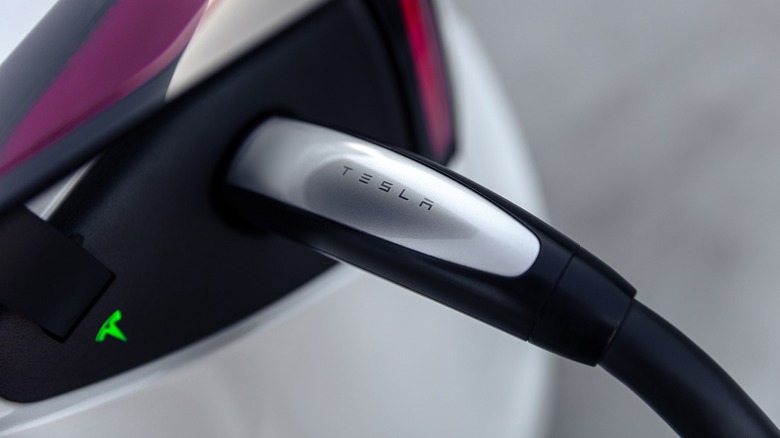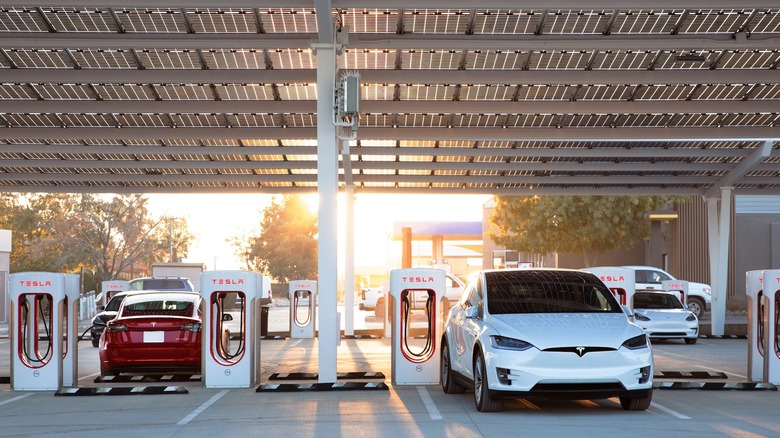What Is The 80% Rule And Does It Truly Matter When Charging Your Tesla Battery?
If you drive a Tesla, you've probably heard of something called the 80% rule, which recommends regularly charging your vehicle to around 80% instead of going all the way to 100%. There's even a "daily recommended charge limit" option highlighted right in the charging settings screen of Tesla vehicles, with anything above that meant for longer, planned road trips. In fact, it's not just Tesla that does this. Several other EV makers, including BMW, Ford, and Hyundai, have official documentation telling users to avoid charging their EVs to 100% unless absolutely necessary. While the specifics vary slightly between brands, the consistent messaging across EV brands is clear: if you want your battery to last several years, don't charge it to 100% every day.
So, why does Tesla — and a growing number of other EV makers — recommend users to stop at 80% for daily charging?
As it turns out, it all comes down to how lithium-ion batteries degrade as they age. When you charge a lithium-ion battery to 100%, you're pushing it to its upper voltage limit, which stresses the internal components of the battery. Continue repeating this process across several charging cycles over several years, and the battery will wear out faster and age more quickly, ultimately affecting its overall longevity.
While it is mistakenly touted as a "rule," the 80% rule centered around Li-ion batteries is merely a recommendation from manufacturers to ensure optimal performance of the batteries. As an owner of a Tesla (or any other EV, for that matter), you can still bypass the 80% rule and charge your batteries to 100%. However, by doing so regularly, you may only cause the vehicle's battery to age and degrade faster.
Why Lithium-Ion batteries degrade faster at full charge
All lithium-ion batteries — from the ones inside your reliable Tesla Model Y to a Samsung Galaxy smartphone — operate using the same fundamental chemistry. Inside each cell, lithium ions move between a cathode and an anode as the battery charges and discharges. Charging a battery to 100% increases the voltage to its upper safety limit. At these higher voltages, several damaging processes accelerate within the battery. These range from the growth of the solid electrolyte interphase (SEI) and lithium plating, which reduces overall battery capacity.
The primary concern with consistently charging lithium-ion batteries to 100% is that the damage it causes occurs gradually but accelerates over time. It starts slowly, but as voltage stress, heat, and chemical side reactions accumulate, the battery's condition deteriorates more rapidly. Eventually, you reach a tipping point where performance drops off noticeably.
One of the best ways to slow down this process is to restrict the charge window of lithium-ion batteries to between 20% and 80%. While this might seem like underutilizing the true capability and range of your EV, it's one of the smartest things you can do to make it last longer. Besides ensuring a longer life for the battery, this practice also ensures that you are left with enough battery life for most daily tasks.
In the case of Tesla cars (and EVs in general), periodically charging the vehicles to 80% instead of 100% does not significantly affect the usability of the vehicle in terms of the range needed. In fact, Tesla explicitly states on its Supercharger explainer portal that charging its cars to more than 80% battery is "rarely necessary."
Tesla Superchargers and the 80% charging limit
While Tesla is fully aware of the issues posed by repeatedly charging their EV batteries to 100%, the company never explicitly mentions the issue on its website, promotional materials, or user manuals. However, the company has several indirect mechanisms that prompt and cajole users to limit regular charging to 80%. For example, the charging screen of Tesla EVs prominently displays a message that reads "80% recommended for daily driving," which is a means to drive down the message to users that an 80% charge is good enough for most daily drives.
Even while using a Tesla Supercharger, Tesla caps the charging to 80% by default. The company officially states that they do this to reduce congestion and wait times at busy Supercharger stations. In fact, in order to discourage users from charging their cars to 100% at SuperChargers, starting in 2023, Tesla even started levying a congestion charge at stations that are full or are close to being full.
While these are genuine reasons to recommend an 80% charge, it is not difficult to notice the consistent, subtle messaging that underlies them. Tesla appears to be going out of its way to discourage users from charging to 100% at all possible levels. It's just that we now know the true reason for this recommendation is also rooted in science and chemistry and is not entirely based on factors like congestion and overcrowding at public charging stations.


